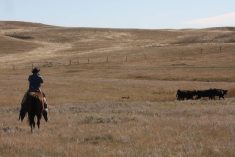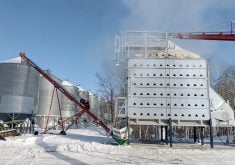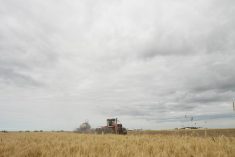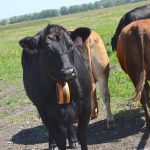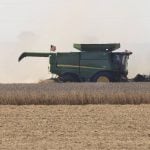Two municipalities in southern Manitoba and a county in North Dakota have become hot spots for clubroot.
Positive symptoms have been detected on canola plants on multiple fields in the municipalities of Louise and Pembina.
Those municipalities are in south-central Manitoba and butt up against the U.S. border.
Across the line, clubroot is becoming a larger problem in Cavalier County, a region with a history of growing canola.
“Our hot spot kind of crosses that international border,” said Holly Derksen, a plant pathologist with Manitoba Agriculture.
Read Also

Why feds imposed EV tariffs
Moe and Kinew have a fight on their hands when it comes to eliminating the EV tariff. Canada has to worry about pissing off the U.S. and Mexico and hundreds of thousands of auto workers.
Clubroot spores have likely been in Manitoba soils for many years, but Manitoba Agriculture first confirmed clubroot symptoms on plants in 2013.
In 2015, the disease was found in a canola field in the RM of Swan River. It has since spread to other fields in the region.
“We’ve had more than one field in Swan River,” Derksen said.
“It’s three or four, I think.”
Derksen doesn’t know the exact number of fields around Swan River because canola isn’t a reportable disease in Manitoba. The province relies on soil sampling and voluntary reporting to track the disease.
In Pembina and Louise, more growers are reporting the disease and talking publicly about clubroot. For instance, a producer in the RM of Pembina held a meeting in July to tell neighbours that he has clubroot on his farm, Derksen said.
Manitoba’s approach to clubroot is different than Alberta, where counties have regulations around the disease. The Manitoba system might encourage more farmers to report clubroot, said Dan Orchard, Canola Council of Canada agronomist.
However, many Manitoba farmers continue to live in denial.
Even when their neighbours have it, they assume it won’t happen on their farm, Orchard said.
That sort of thinking is perilous, especially in the RMs of Swan River, Louise and Pembina.
“Just assume you have clubroot. And if you don’t, you’re going to have it soon,” Derksen said.
That means growers should be seeding clubroot resistant varieties and including another crop in their rotation.




